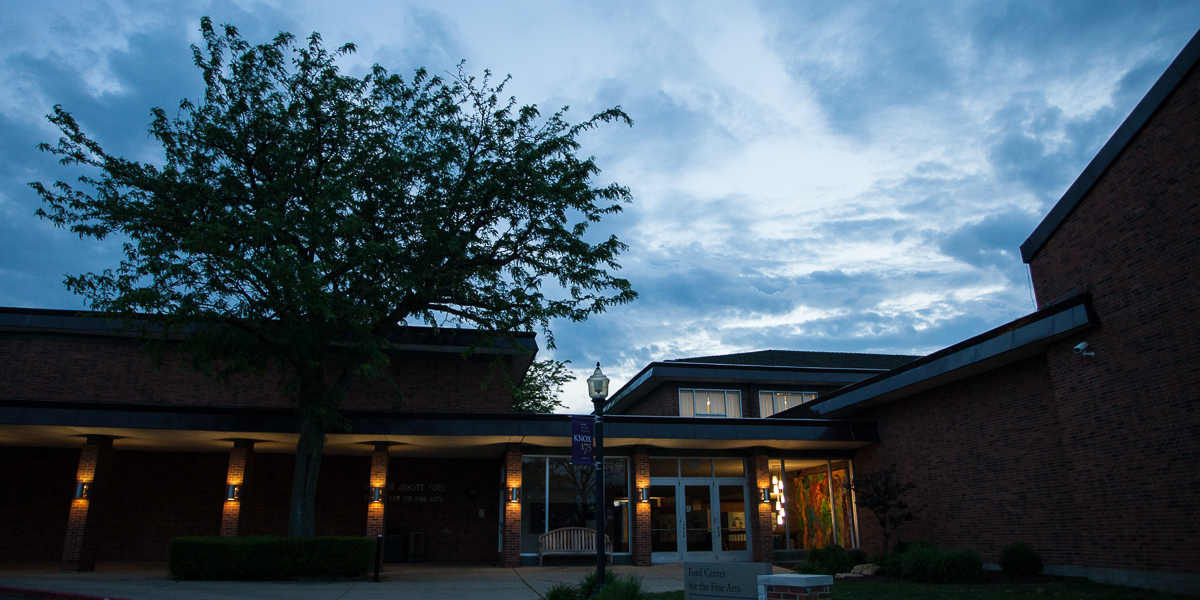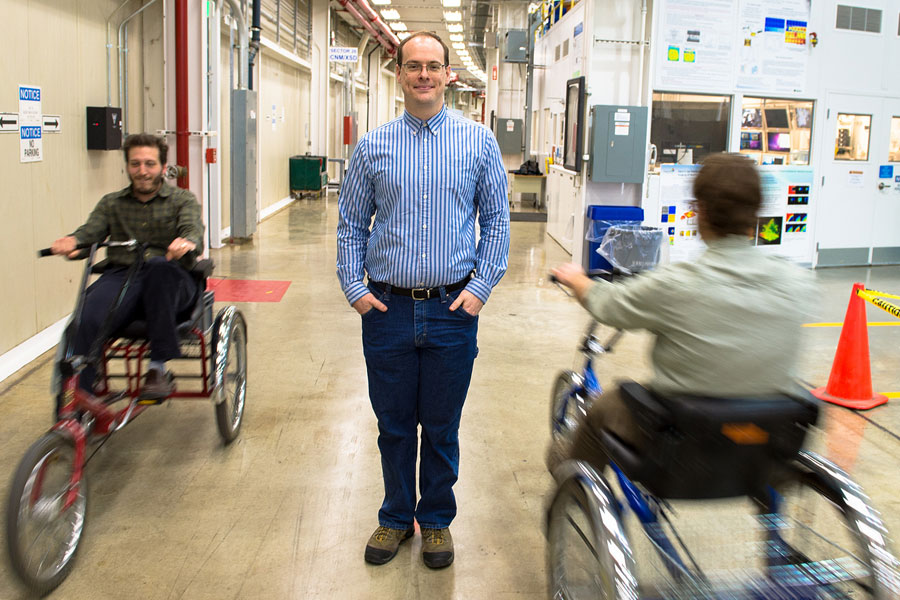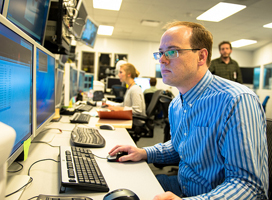Knox Stories
Michael Takeo Magruder Named First Knight Fund Distinguished Artist-in-Residence
Knox College will host its first-ever Knight Fund Distinguished Artist-in-Residence, Michael Takeo Magruder, from September 16 to September 30, 2025
Venture Boldly

Office of Communications
2 East South Street
Galesburg, IL 61401


Benjamin Stripe, a 2006 Knox College graduate, is a postdoctoral fellow at Argonne National Laboratory's Advanced Photon Source (APS), one of the world's most powerful X-ray sources for scattering, spectroscopy and imaging studies. In his research in Sector 26 of the APS beamline, Stripe focuses on creating a more effective lead-free solder. At Knox, he double-majored in physics and mathematics. Interview and photos courtesy of Argonne National Laboratory.
What is your background and how did you come to Argonne?
I did my undergraduate work at Knox College in physics and mathematics. From there I went to Northwestern University for graduate work in the physics department. My thesis was on biomineralization. We did studies of template-directed growth of biominerals. Basically, we used templates with soap films on the surface of water to grow calcium carbonate crystals. During grad school I worked on my research here at the APS, in Sector 15 in the Material Sciences department. We used X-ray scattering to look at the minerals growing beneath the soap films. When I saw this postdoc opening at Argonne, I was very interested in continuing my research from graduate school.
At the moment, Sector 26 has a vacuum instrument so it doesn't probe things in a liquid system. However, I learned that Argonne was interested in having in-situ capabilities for the instrument. In fact, we're working with a company to build an in-situ, vacuum-compatible cell. With that cell, I hope to continue my work in biomineralization.
What does your current job entail?
Right now I'm doing fluorescence user support for the scanning probe instrument in Sector 26. Fluorescence microscopy is often used in biological samples, and it's great when you have an unknown distribution of elements or compounds in a system.
We're usually supporting about three users at a time. People come in from all over the world to use this beamline. The instrument here can do three general techniques: fluorescence, diffraction and tomography. I help schedule and set up the experiments.
What do you like most about Argonne?
Argonne is a major national laboratory and a user facility, so there are all sorts of talent that come through here. Having worked in Sector 15 for a while during grad school, I have come to know several different sectors around the ring. Working at the APS, I can walk around the ring and meet people and have discussions. The amount of science that gets done here and the access to the tools we have is really amazing.
When you come from a university setting, you have collaboration and some access to equipment. But here you have access to people and world-leading instruments. The people here are excellent. People come to this beamline for different purposes. It's given me access to a lot of very interesting users and the opportunity to broaden my horizons as well.
What advice would you give graduate students about finding the ideal postdoctoral appointment?
Make sure the postdoc you're aiming for gives you the ability to do the research you want to do in your career. This is the time in your life where you define the research you want to do. So, ideally, find a postdoc where you have the ability to branch out and do your own research.
That's why I feel very lucky to have gotten the job here. Besides providing user support for fluorescence users -- where I meet people who are very smart and I have the opportunity to collaborate with them -- I'm able to present proposals to do my own research -- for example, research on lead-free solder.
Published on July 12, 2013